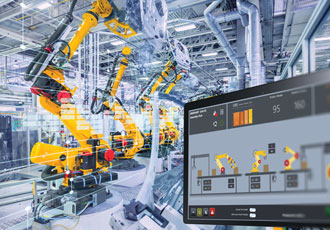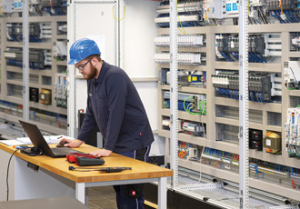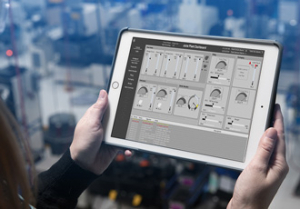What is pushing the development of ‘future-proof’ SCADA?

With the role of SCADA changing within the industry, it pays for plant managers to become familiar with the trends that are shaping the development of next-gen SCADA systems. With modern technology pushing operating capabilities ever further, what key features will denote ‘future-proof’ SCADA?
Paul Hurst, Director at Products4Automation, explores the characteristics of modern and future SCADA platforms.
If you put the obvious (and inevitable) jumps forward in functionality and networking communication to one side, the major factor in the development of SCADA for the factories of the future is a practical one; the user demand for increased versatility. Not only should the latest SCADA monitoring systems offer ease of integration for existing and new technologies; they should also display the scalability and transparency required to allow plant managers to create a truly custom monitoring system with ease.
Such characteristics can be achieved by actively designing a SCADA system for the latest software platform technologies - future-proofing, which can be achieved by utilising the latest network protocols, modular process structures, graphical capabilities and communication technologies as part of SCADA software architecture.
A next-gen SCADA platform should use specific hardware and OPC UA protocols for ease of integration across the plant; Windows Presentation Foundation (WPF) graphics for modular process modelling would be a good idea and connectivity to the Cloud via a range of options - is pretty much essential. All are technologies that will likely form the basis of Internet of Things (IoT) and compatibility with future expansion towards Industry 4.0 compatible monitoring systems. SCADA platforms must evolve and adapt seamlessly with these trends.
Traditionally, SCADA has been confined within the plant walls, either though network PCs or HMI terminals. However, the smart device revolution of the last few years has changed this. Smart phone SCADA apps for iOS and Android operating systems mean that plant managers can now monitor and analyse data from anywhere 24 hours a day on a personal wireless device, offering improved responsiveness to alarms and increasing production uptime as a result.
Monitoring will be further revolutionised by breakthroughs in Augmented Reality (AR) and Virtual Reality (VR) technologies. In the not too distant future, it is not implausible that we will see engineers utilising virtual headsets to navigate a 3D plant which offers real time data and models representing the physical plant off-site.
Increases in graphical capabilities will achieve accurate environments which will enable engineers to gain even more insight into processes, and maybe even amend applicable parameters virtually via the AR or VR environment.
Continuing demand from users for versatility and ease of implementation are spurring large developments in SCADA frameworks, while the increased connectivity available in our modern world is being reflected by Cloud and smart device based monitoring systems. Ultimately, to keep pace with the demands of Industry 4.0, SCADA systems are now required to be modular, so that they can seamlessly adapt to incorporate future technologies. With this approach, operators can enjoy the efficiency, profitability and agility of an ever-evolving future-proof SCADA platform.
Similar articles
More from Products4Automation
- Will 5G be a game changer for SCADA? 18th December 2019
- Controlling a textiles factory from home 22nd November 2019
- Increase production flexibility with better batch management 8th October 2019
- Cruise passengers stay cool with HVAC control systems 28th August 2019




 technology at Jacobs Vehicle Systems.JPG)







Write a comment
No comments